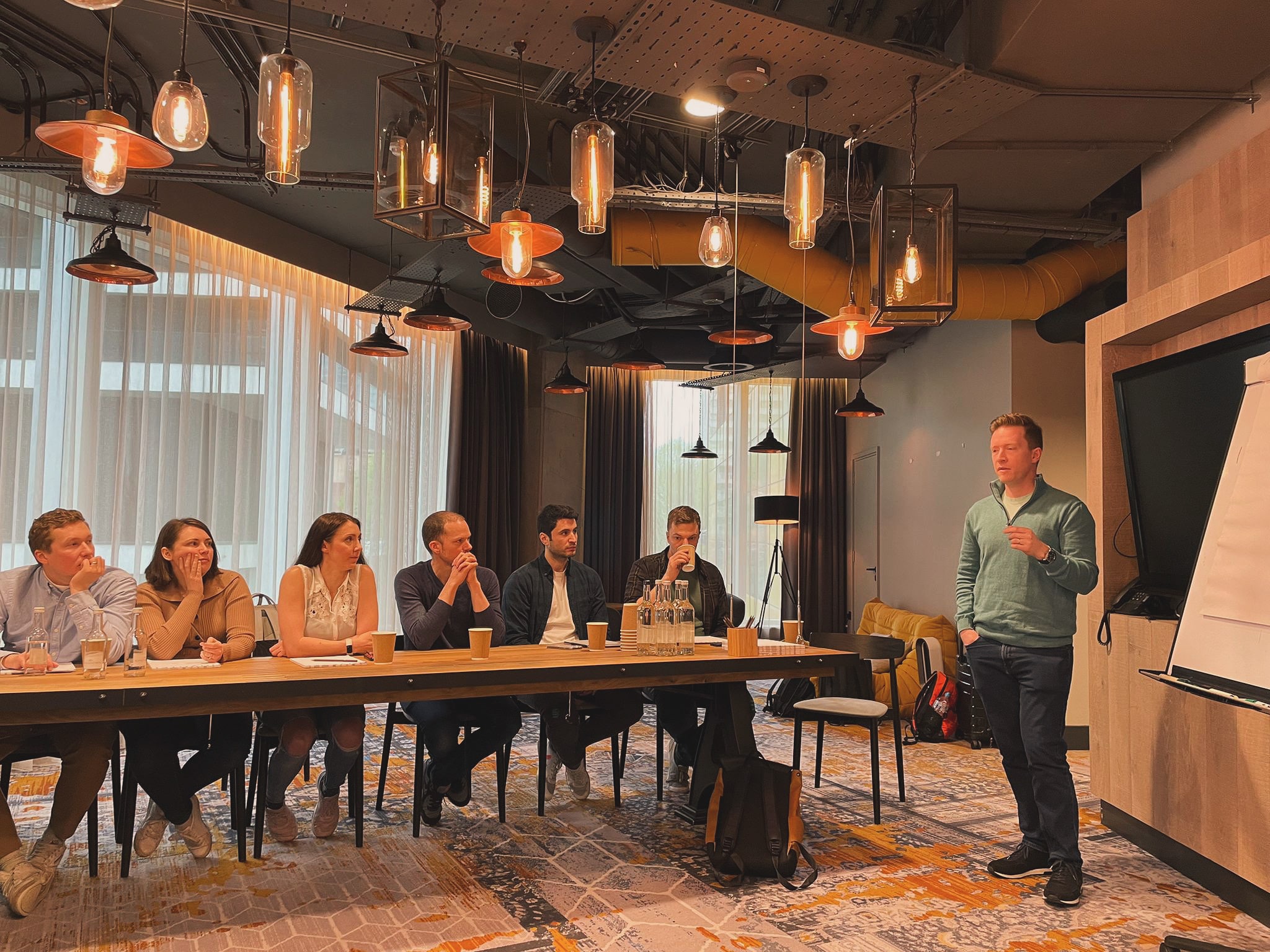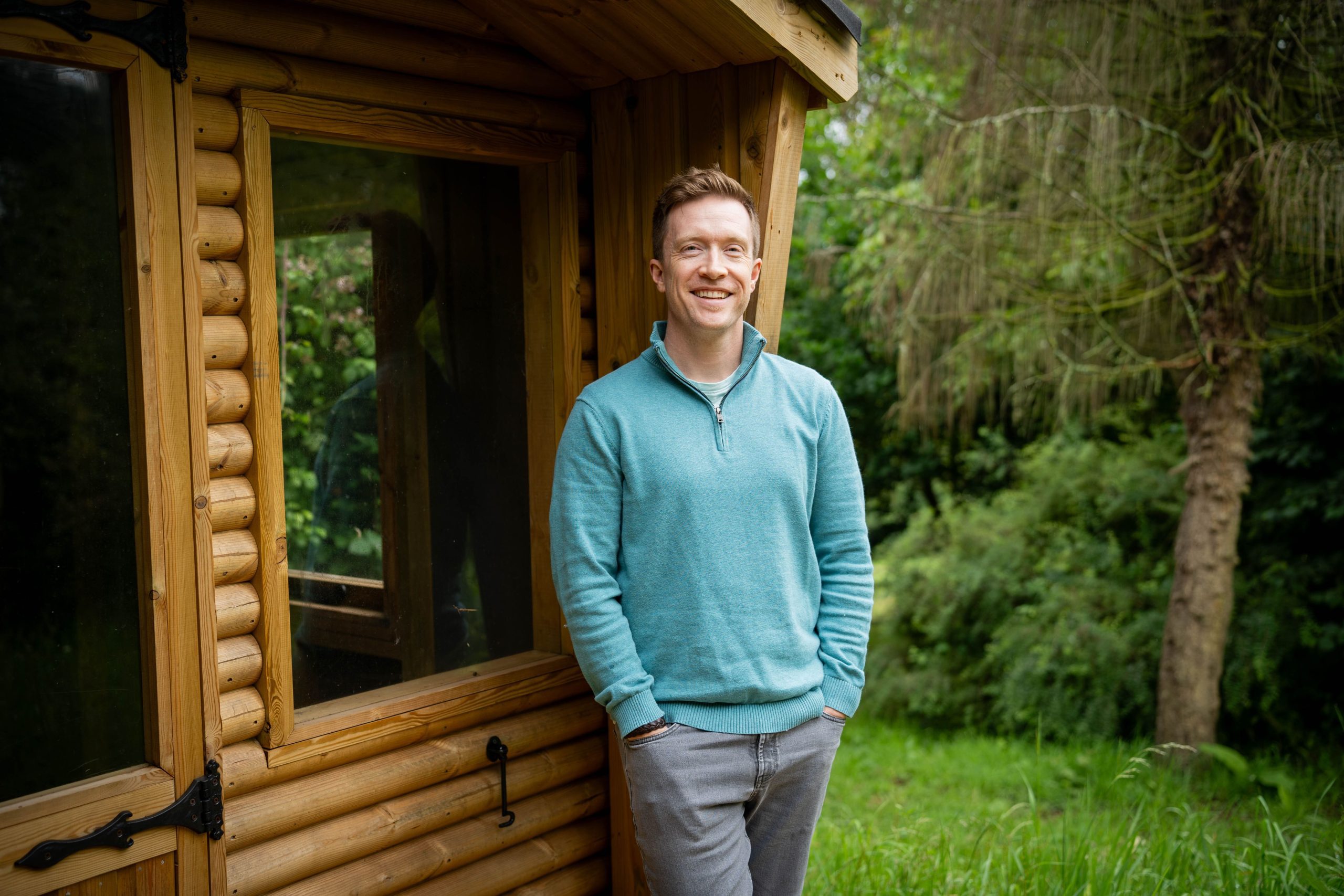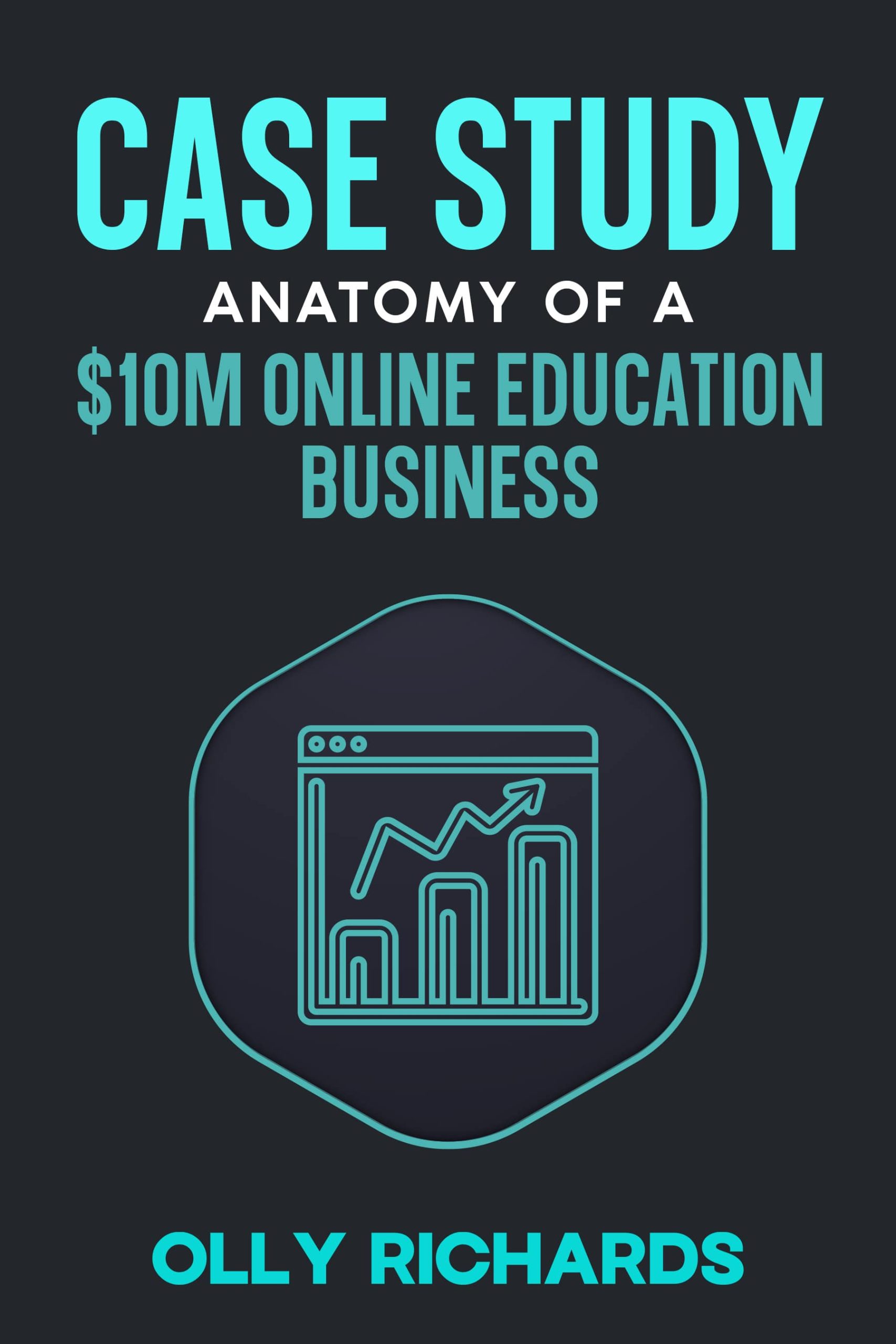It’s the perennial dilemma for education entrepreneurs…
Should I grow my business with paid ads, or stick with organic content?
We all know the pros and cons…
• Organic channels – they’re powerful and feel like “free traffic”. But you’re one algorithm change away from oblivion.
• Paid ads – they promise unlimited scale. But they’re difficult to nail and you can go broke trying to figure it out.
So what’s an entrepreneur to do?
Well, as with most things in business, the answer is…

It depends!
So, in today’s newsletter I’m going to explore this topic by way of five short case studies of education businesses at different stages of scale, together with a commentary on what factors they should think about when considering paid ads vs organic.
(Oh, and one of these examples is me! See if you can spot which.)
Let’s get into it…
Business 1 - Social Writer
Our first case study focuses on a social media writer who has built a successful mid-6-figure digital course business, growing their following entirely on social media, supported by a newsletter.
With their sizeable Twitter following + digital courses, they’ve become accustomed to very high profit margins.
They enjoy writing, and love the relatively passive lifestyle.
However, they’ve recently seen their lead flow from social dry up as a result of algorithm changes.
How can they replace their lead flow?
The Twitter decline has left them spooked about moving into new organic channels – isn’t this just as risky?
And so, the social media writer is contemplating the use of ads to diversify their traffic sources. Paid ads offers the potential to scale their audience to the moon, with none of the risks of organic traffic.
But here’s the thing…
They will likely have to use their existing digital products to liquidate ad costs, leaving little to no profit.
If they want to make money, they’ll need to add a high-ticket backend.
That’s fine…
But this is NOT a business this entrepreneur wants. They enjoy the passive writing lifestyle! Changing their whole business model, just for the promise of more money or a sense of existential safety, is a big decision.
Ultimately, the choice is theirs to make.
By aligning their business strategy with their personal values and desires, they can make an informed decision.
Business 2 - Coach
Example 2 is a coach who is making around $20,000 a month
and has built a steady profitable business off the back of their existing contacts and online following.
Most of their clients are coming from Instagram, which they’ve built steadily over a few years.
They’re enjoying keeping most of the revenue in the business as profit… but it’s essentially a well-paid job that’s keeping them very busy.
They want to raise their prices so they can work less but don’t have enough lead flow to do it.
If this coach ever wants to scale out of direct one-to-one time, they have no option but to increase their lead flow.
They have two options:
- Become world-class at Instagram and scale their following further
- Use ads to grow
In this scenario, there isn’t a great deal of proven track record.
They’re able to make good money from their business
because of the high-ticket coaching backend, but they have a relatively small following.
While it’s powerful, there’s no evidence that this following can actually scale much beyond where they are.
So they have a choice to build the future of their business on organic or on paid.
Organic, of course, remains very high profit.
But there’s always the risk that it can be taken away from them at any time.
Paid, on the other hand, offers unlimited upside because they’ve got enough room on the back end to profit
and the business can never be taken away from them.
In this scenario, growing with ads is very appealing.

Business 3 - New Business
Example three is an entrepreneur wanting to start a brand new business.
They have stepped back from their existing business
and want to put their creative energies towards something else.
They know what they want to build and don’t necessarily have to spend too much time figuring it out. They have substantial resources from their existing business and can afford to invest that into the new venture – an education-based business, where the real asset is audience.
The question is: Grow with ads, or organically?
There are only two ways to get a business off the ground:
- time
- resources
Time, of course, is never actually free.
And so, in this case, there really is no downside to using ads,
provided that you have a certain tolerance for losing the money in a worst case scenario.
What would make even more sense is splitting the resources
so that he could buy ads to get quick traction while also building organic audiences for long-term diversification
and as a way to bring down overall CAC.
Business 4 - YouTube Educator
Our fourth example showcases a YouTube-based teaching business that generates millions in revenue.
Despite its success and profitability, the business has reached a plateau, likely hitting the natural ceiling of what’s possible with one YouTube channel.
The owner now faces a crucial question:
With YouTube capped out, should they venture into paid ads to continue growing?
One thing’s for sure…
With a mid-7-figure business, diversification is essential.
But there’s another consideration here.
As an established “creator” business with a clear way of operating, it’s almost inevitable that their existing business model will not translate seamlessly to paid ads.
Cold prospects behave entirely differently from loyal YouTube subscribers.
This means that they will likely have to adapt their entire business model to work with paid traffic.
After 10+ years in business, does this entrepreneur have the energy for such a change?
New team members with different skillsets will be required.
To quote a friend: Is the juice worth the squeeze?
To continue to scale, there’s no doubt that this path will be necessary.
But there’s another option that’s important to consider…
As a multi-7-figure business that’s still going strong, the owner has considerable raw earning potential.
They should consider the possibility of streamlining the business, cutting overheads, maximising profit, and taking serious money off the table for a few years.
In this scenario, the owner could consider slowly extracting themselves from the business, using their time to either gradually build another traffic source, starting another business, or pursuing other passions.
There’s no easy decision here.
But understanding the task ahead and examining one’s own life desires can greatly simplify the decision-making process.

Business 5 - Service Business
Example five is a service business with a million dollars in revenue.
But the business owner is fed up with delivering the services and wants to pivot to a new more passive model, where he can focus on quality of life over business size.
He knows what he wants to build, and has the sales skills to make things happen fast. He also has the choice of building his audience from anywhere he chooses.
The benefit of organic is that it suits his lifestyle needs nicely…
He can focus on building slowly over time and with his existing skills can probably get traction quite quickly.
The benefit of ads though is that he has the wraparound skill set to be able to move faster than someone less experienced.
He’s also willing to have a high ticket consulting offer as part of his funnel, meaning that he has the ability to not only get ads working quickly and generate a return
but also create the high ticket back end to profit from them.
Given the fact that he has existing stability from his business
and the skill set to make ads work, that makes ads a very compelling proposition.
Conclusion
To summarise:
- We looked at 5 different online education business examples
- Each was at a different stage and size
- All faced the dilemma of growing through organic or paid traffic
- Each one is bringing a different set of circumstances to the table
- The right answer for each depends on business model, audience size, risk tolerance and life goals
As you can tell, there’s no “right” answer.
The best approach is to familiarise yourself with the options, and make an educated choice.
Did you spot which one was yours truly?
It was #3, of course.
I’ve written about it in the back catalogue of my blog, and in-depth in my One-Person Empire workshop.
I think, in reality, the true difficulty here is this…
It can be difficult to make decisions like this based on theory alone.
You’re always going to have a little devil on your shoulder second-guessing you.
In the end, there’s no substitute for experience.
In which case, you either have to say your prayers and take a leap of faith…
Or find someone who HAS done it before to guide you through.
Anyway…
I hope this has given you something to think about.
Namaste,
Olly
CASE STUDY: Blueprint Of A $10m Online Education Business:
Join my free newsletter for online educators and I'll send you the case study immediately...
We will protect your data in accordance with our data policy!

